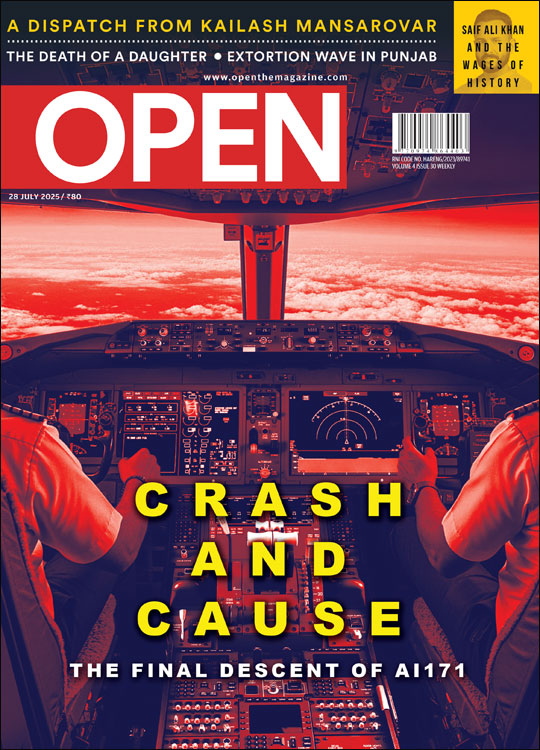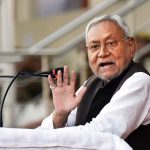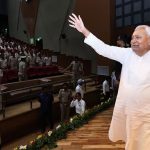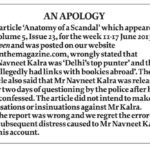THANKLESS INDIA
The manhunt for Yasin Bhatkal was India’s most meticulously planned undercover operation. An Open Exclusive chronicles India’s most sensational stakeout
/wp-content/uploads/2015/11/Thanklessindia-main.jpg)
The manhunt for Yasin Bhatkal was India’s most meticulously planned undercover operation. An Open Exclusive chronicles India’s most sensational stakeout
An Indian tourist leaned thoughtfully on the metal balustrade outside a bar in Nepal’s scenic town of Pokhra. Clad in Bermuda shorts and a bright bush-shirt, the man could have been any of the thousands of Indian tourists who throng this town. The watering hole overlooked a lake, bordered by verdant hills. Hired speedboats driven by tourists sped past him. It wasn’t the foothills of the Himalayas and the salubrious weather that had brought him here. Inside the bar, two of his colleagues waited, trying to appear casual but with urgent matters on their mind. Two others of the group were in a different part of town, sipping Coke while awaiting that vital signal for action.
This was an undercover stakeout for India’s most wanted terrorist Yasin Bhatkal. It was the denouement of a six- month long operation to capture the elusive man known as the ‘Ghost Who Bombs’.
The man outside the bar was anxious. As head of the Special Operations Group (SOG) unit charged with the task, he knew there was no room for error. It was, after all, a foreign country. To solicit the cooperation of the Nepal police and intelligence services, it was important to be certain of the target’s identity. Failure was not an option.
IT was on 13 August 2013 that the undercover tourist expedition began, launched in Patna by the Bihar unit of the SOG. The go-ahead was given by the Joint Director of the Intelligence Bureau (IB), stationed in Bihar’s capital, at a meeting held with his deputies. The meeting took place in the backdrop of an alleged witchhunt of IB officials who were part of the operation that busted the terror module of which Ishrat Jehan was a part. The Joint Director wanted to ensure that the low morale of his forces did not come in the way of their work.
The leader of the team that led the Nepal operation was among those present at the meeting. In the thick of the meeting, he received a phone call on his mobile. Recognising the caller, one of his key ‘human assets’ in Nepal, he rushed out into the corridor to take the call. The informer had received news from one of his men that a man resembling the ‘suspect’ in a photograph given by the IB had been seen in Pokhra. However, the suspect was clean-shaven and had close cropped hair, unlike the man in the picture. But the eyes matched. According to the informer, the suspect had referred to his wife, a teacher in Delhi (his wife did live in Delhi and was being shadowed by Intelligence sleuths), his parents in Dubai (they had been in Dubai, running a laundry, but had returned since to Bhatkal in Karnataka), and was posing as a Unani doctor.
Posing as a Unani doctor was one of Bhatkal’s favourite disguises. In Dharbanga, Bihar, where he had set up a sleeper Indian Mujahideen (IM) cell, he had assumed the same identity. In Nepal, he was Dr Yusuf.
By now, the officer was certain they had their man. He rushed back in to inform the Joint Director. An Operations man, the Joint Director was convinced. He asked for time to call his superiors in Delhi’s IB establishment. But the IB bosses were not convinced. The Joint Director reconvened the meeting in Patna to tell the officers of the disappointing response from the national capital. But the officer who had got the lead from Nepal was not one to give up easily, and took it up with the Joint Director again after the meeting. “Sir, my source is sure, the information looks authentic, most of the details match. We have to take this chance, to pass it up would be suicidal,” he told him. “We have to go to Nepal, even if we are jailed [for it].” After a pause, the Joint Director replied: “You’re right. But you have to pose as tourists.” The Joint Director knew he was sticking his neck out, as were his men.
He had sought permission for an official trip to Nepal, but his IB bosses had been curt. “There will be fifty pieces of information. Will you send out fifty teams?” The Joint Director had another thought in his head: the Bihar unit had been keen on nabbing Mohammed Ahmed Zarar Siddibapa, alias Yasin Bhatkal, particularly after the Bodh Gaya blasts, which bore the imprint of the IM but had not been confirmed thus far. “We have to take this as a challenge,” he concurred.
There were many precautions to be taken, especially since this would not be an official expedition. The Joint Director cautioned his men: “Don’t take any ID cards with you that will reveal your identity. Deposit [them] at the border. Remember, if you are caught, you will be jailed. If you fail at the task, things will be very bad. You’ll have to cool your heels in some jail in Nepal. And I will be repatriated to my parent cadre for my role in this expedition.”
Things began to move at lightning speed after that tacit approval. A special unit of five men was put together. “May we take East Champaran SP Vinay Kumar into confidence about the operation?” asked the team leader. Kumar, a well-connected police officer, often held coordination meetings with his Nepali counterpart and would be of help if things went askew. Things were finally falling into place.
Nepal had always attracted thousands of international tourists, including Indians, every year. Since the 90s, though, it had become a safe haven for criminals and terrorists fleeing the Indian police. The SOG, which was set up in 1999 under the IB at the Centre by its then chief Ajit Doval, had since the mid-2000s turned its focus to Naxal leaders; by 2011, it had nabbed Kobad Gandhi, a Doon School alumnus whose association with the Maoist cause blew the lid off the myth that extremists were mainly recruited from among the underprivileged. The SOG in Bihar, however, was directed by the government to focus on fundamentalist Muslim organisations whose operatives had begun to use Nepal—which shares a porous border with Bihar at Raxaul—for rest and recuperation. The SOG’s anti-terror squad was entrusted with the task of tracking and ferretting out the terrorists wanted for a variety of bomb blasts and killings over the years across India. Accordingly, it had cultivated a network of informers in Nepal, especially in towns with high Muslim populations.
It was clear that any assignment by the squad had to have a fair amount of secrecy, involving as it did cross- border terrorist activities and a friendly neighbour such as Nepal. There was also a strategic imperative to keep the operation under cover from police forces in India for security reasons. At Raxaul, for instance, the border post and town police were notorious for their complicity in the smuggling of a variety of goods across the border, including subsidised foodgrains and fertilisers (including urea, used in the making of explosives). Information leaks would be hard to contain.
The leader of the team was chosen on account of his ability to think on his feet. Bhatkal, according to an IB officer, was “as slippery as Houdini” because he had perfected the art of avoiding detection. He constantly changed his sartorial style and appearance (clean shaven, wispy bearded, full bearded, moustached). He would also change his mobile phone often and use it only for a few seconds at a time to avoid being tracked and his location identified by intelligence agencies. The IM may have used the internet to spread its message and contact media organisations after successful operations, but the dreaded head of the outfit avoided email. Bhatkal also changed addresses frequently, often moving into nondescript rooms hired in sparsely populated areas and colonies that were less likely to be under surveillance.
In 2013, the Indian Government announced a Rs 3.5 crore reward for details of Bhatkal’s location or for his capture. At 30, he was considered responsible for more than 220 deaths countrywide. He figured on the ‘Most Wanted’ list of 12 states, including Gujarat, Uttar Pradesh, Karnataka and Andhra Pradesh. For the five-member SOG team, it was a hunt for a very high-value target.
The informer had told the SOG commando that a man who could be Bhatkal was sighted at Routahat in Bara district, 40 km from Raxaul, where the ‘suspect’ had the shelter of one Maulana Moinuddin Ansari at a madrassa near Gaur. According to the informer, the ‘suspect’ spoke with a “South Indian accent” and had moved to Pokhra.
The SOG team leader got in touch with the IB head quarters at New Delhi, but got a dressing down. Delhi’s officialdom was convinced that Bhatkal was in Pakistan, and had no takers for the hot lead from Nepal. “This is so demoralising for field officers who put their heart and soul into their work,” a police official tells Open.
The demoralisation had mostly stemmed from the Ishrat Jehan encounter case, for which the IB was hauled up along with the Gujarat Police, some of whose top officers were believed to have planned and executed the entire operation. The team leader and his field officers faced a specific problem in the case of Yasin Bhatkal. Wanted for his alleged role in virtually every terror attack since 2007, he was known to have not only masterminded several of the bomb blasts in various parts of the country in that period, but also planted some explosives himself.
The ‘Ghost Who Bombs’ had given the slip to Intelligence units in so many Indian states that few believed he could be nabbed. There had been a few close brushes. In December 2009, Bhatkal, who was wanted for bombings in Delhi and Hyderabad, was picked by the Kolkata Police in connection with a theft case. But he managed to convince his captors that he was a local resident called Bulla Mallik, and walked out of the Shakespeare Sarani police station. His next bomb blast came soon after.
In 2008, Bhatkal and some of his colleagues in the IM— which was declared a terrorist outfit in June 2010 by India and in 2011 by the US—were located through a tip-off in Chikmaglur in Karnataka. But the police delayed the raid and Bhatkal got away again. In 2010, the CCTV camera footage of the German Bakery blast case identified him in Pune.
In 2010, in a big goof-up, the Karnataka Police had nabbed Yasin Bhatkal’s younger brother, Samad, at Mangalore Airport and the UPA Government prematurely announced the capture of the country’s ‘most wanted’ man. However, then Home Minister P Chidambaram had to admit that it was a case of mistaken identity and released Bhatkal’s brother. These developments were enough to make the IB’s higher authorities in New Delhi balk at any claim that Bhatkal had been traced.
It was the third week of August 2013. The myths around Bhatkal did not dampen the team’s confidence. The plan was in place. The five of them would leave for Nepal in a Mahindra Bolero posing as tourists. There was only one constraint: money. As a junior official, the team leader earned only a modest salary. “Almost 30 per cent of our salaries is spent on operations. We don’t get paid enough. We have meagre savings. If we still persist with enthusiasm in our assignments, it is primarily because many of us are passionate about our work. We move out of our comfort zone often in the line of duty,” in the words of an SOG officer.
The team leader obtained a Rs 40,000 loan from a friend to buy Nepali SIM cards and cover the other expenses of the team. By 2 pm on 20 August, they reached Motihari and sought out SP Vinay Kumar. They filled him in with the broad plan without mentioning specifics, and found him keen to join their mission. This suited the unit perfectly well. The SP arranged two more vehicles for the men to use. Later that day, the group left for Pokhra—a 280 km journey—from Birganj, just a few kilometres across the border from Raxaul.
Among the first things the SOG team did was call the Nepali informer and ask him to meet them at Birganj to work out details of the plan. This was a risky move which could have backfired, and the decision was taken only after weighing the pros and cons. The team leader had never met the informer before, only spoken to him over the phone. It could have been a trap set for the SOG. But it was a call that they had to make.
At no point was it let slip that Vinay Kumar was also travelling with the team. Things went smoothly at the meeting and the informer left Birganj for Pokhra soon after, reaching early the next morning to await the arrival of the team. The SOG team, along with the senior police official, reached Pokhra the next evening and checked into Mount View Hotel. All the necessary logistical support was arranged by Vinay Kumar, who had by then been told about the target. The Nepali informer came to Mount View on 21 August to discuss details. After breakfast that morning, the men, in Bermuda shorts and shades, hired two motorcycles and set out for watchpoints they had chalked out. The stakeout to nab the nation’s most dreaded terrorist was about to begin, and there was no saying how long it would take.
It was also on 21 August that the team received information that Bal Bahadur Thapa aka Abdullah, a former Indian Army soldier who lived in Burhi Bazaar, a few kilometrer from Pokhra, knew the location of Yasin Batkal’s main hideout. A convert to Islam, Thapa— who, incidentally, was detained by the Nepal Police during Prime Minister Narendra Modi’s recent visit— was known to ‘look after’ Bhatkal. The team asked the informer to meet up with Abdullah at 1.30 pm, just before the afternoon Muslim call to prayer. The informer, it was decided, would request Abdullah to take him to a place where he could offer namaaz.
For the men of the SOG team, time stood still while they waited. Finally, the phone rang. It was the informer, confirming that Abdullah had agreed to take him to a place where he could offer namaaz. On two bikes, the men followed the informer, who was in a car. At Burhi Bazaar, they deliberately slackened but kept tailing the car at a discreet distance. They saw the informer draw close to a man, presumably Abdullah, and hold a conversation for about 10 minutes. They then left together, leaving the two SOG team members scrambling to tail the car.
The convoy of vehicles ground to a halt some two kilometres ahead. They had reached Oregaon Chowk, and before them stood a small house. Located by the highway, this house gave its occupants a vantage point from which to watch out for anyone approaching, and seemed like a good location for a man in hiding. The team stayed put on the highway to assess the situation. While they lay in wait, they heard a motorbike approach. The pillion rider seemed somewhat familiar. Could he be their quarry?
The pictures of Bhatkal they had downloaded off the net did not completely match. The motorcycle drove right in through an entrance at the back. This was Bhatkal’s residence, they were convinced. Still, they had to get conclusive proof that this was indeed the case.
The exhilaration of locating what could be Bhatkal’s hideout threatened to fizzle out the very next day. Abdullah was avoiding the informer. The SOG men called the informer in for a debriefing session. According to the new plan, he was to pretend he had a medical problem and wanted to be treated by a Unani doctor. He would go with Abdullah to the doctor’s chamber, collect a voice sample, observe the surroundings, note the number of people around, and, if possible, check whether they slept on floor kalims or beds.
The ruse worked. Hours after his appointment, the informer called SOG members to say that the Unani doctor appeared to be Bhatkal. “He is fair and his Hindi is good, but he appears to be a Kashmiri, not a South Indian.” That didn’t sound quite right. This input triggered another net search for identifiers—such as birthmarks and scars—that are difficult to disguise. They zeroed in on three specific details: Bhatkal had an obstinate tuft of hair on his forehead, a few strands of unruly hair that curled backwards. Two, Bhatkal had a prominent scar on his forehead. Three, he had a pronouncedly protruding upper set of teeth. Whether the man in question was a Kashmiri or South Indian could be ascertained from the voice sample that the informer would capture, which could be put to phonetic analysis for inflexions and diphthongs in his speech. The informer was given an additional behavioural tick to check for: Bhatkal was known to remove his headscarf only for the ritual ablutions before offering namaaz.
None of this could be checked in a hurry. The informer had to be handled carefully so that he did not blow the operation prematurely.
Surveillance, meanwhile, continued.
It was soon discovered that Bhatkal had created a network of 20 to 25 young men who were regular visitors to his residence. Oregaon Chowk was sparsely populated and tea shops were hard to come by, but there were quite a few bars. These served as watchpoints for the SOG members. The exercise would demand patience, they knew, but by 24 August, they had a breakthrough: the informer, posing as a patient, had used his mobile’s ‘record’ mode to obtain a clear voice sample of the Unani doctor. The team set about examining each inflexion and vowel sound. At the end of the exercise, they were sure it was Bhatkal’s voice. The speech in Hindi had a southwest Maharashtrian overhang. The team was convinced.
That night, the team met at the hotel for a stock taking session. The team leader called his Joint Director in Patna at 8 pm to give him the good news. “Are you sure? Shall I talk to the DIB?” the Joint director asked. “Sir, 200 per cent,” he replied.
The men, however, told the Joint Director that there could be difficulty in getting the ‘target’ across the border to India , given the checkpoints en route. “Sir, if Delhi rejects our proposal to nab Bhatkal, we are ready to lift him [anyway],” the team leader told the Joint Director. In police speak, ‘lift’ could involve a range of methods: from drugging and gagging the suspect to rendering him unconscious for transportation, or just plain threatening him into accompanying them.
To be on the safe side, however, they decided to take an Additional Director of the IB in Delhi, another operations man, into confidence on the details of their operation. “I hope you are certain. If we are wrong, we will be crucified,” he cautioned, before he picked up the hotline and informed his higher-ups that the Bihar SOG team was ready to act. “If the suspect proves not to be our man, we will set him free,” he assured the IB top brass.
The Centre got in touch with the Nepal government, a coordinated effort to arrest ‘a wanted criminal’ was immediately agreed upon, a call was placed to an official attached to the Indian Embassy in Nepal, and an Indian Police officer posted there swung into action.
On the morning of 25 August, a four-member Nepali police team arrived to coordinate efforts with the SOG and hand it a set of conditions:
1.Don’t pick up the suspect from a crowded place such as a bazaar or a bus station.
2.Don’t accompany the Nepali cops during the operation
3.The Indian team will not be anywhere near the building once the house is identified.
If the ‘target’ turned out to be a Nepali citizen, the SOG members were cautioned, the repercussions on India- Nepal ties could be severe, given the anti-India sentiment prevalent in the country at the time.
To retain secrecy, the Indian team did not divulge any details on Bhatkal to the Nepali police. Only the house was pointed out for the latter to go ahead and make the arrest.
The SOG men would wait at a distance. From their surveillance point, they spotted another person in the house: a handsome man who they quickly identified as Asadullah Akhtar, also known as ‘Haddi’, an al Qaeda operative. ‘Haddi’ was the main suspect in the Varanasi, Pune, Zaveri Bazaar (Mumbai) and Ahmedabad blasts. Bhatkal’s senior in the IM hierarchy, he was a hardened operative trained in Afghanistan, and the Indian Government had a reward of Rs 10 lakh on his head.
‘Haddi’ was also reputed to be highly intelligent. Sensing something amiss, he ventured out of the house to look around Oregaon Chowk, and, at one point, noticing an SOG man, even began trailing him. To shake the al Qaeda man off, the SOG man had to duck into a hair salon closeby—he emerged clean-shaven, his beard gone, but all the safer for it.
There were disappointments in store. The Nepali police officers, after some sniffing around, gave up and left Oregaon Chowk. Meanwhile, Vinay Kumar had to rush back to Bihar; communal clashes had broken out in Motihari on the eve of Krishna Janmashtami. The SP took one of the Scorpios with him, leaving only one vehicle for the SOG men. A sense of gloom settled in.
The silver lining appeared on 27 August. All the while, officials of the Indian Government had been talks with their Nepali counterparts to convince them of the need to catch the suspect. The nod finally came, but with a rider: the operation could only be conducted at night.
The next day, nature seemed to be conspiring against the SOG members. At around 4 pm, it started raining heavily. Later that evening, they had to return their hired motorcycles. With only one vehicle, there was no question of accompanying the Nepali police.
But time was running out, so the SOG team asked the Nepal police to conduct the raid on that very day. They watched from a distance as the local police finally entered the house on the highway off Oregaon Chowk at 8.30 pm. At 10 pm, the SOG team got a call from the Indian Embassy in Kathmandu. The IPS man on the line was furious. “You are picking up an innocent man,” he yelled, “The man you staked out is a turbine engineer.”
The operation was at threat of being jeopardised. One of the men in the team replied: “If you are an IPS man, you should smell a rat when a turbine engineer practices Unani medicine and calls himself a doctor. Isn’t this man’s name Dr Yusuf? Please ask the Nepali police to bring him out. We will identify him.”
A little calmer by now, the embassy official agreed to convey the request to the Nepali police. “Our men had a strong suspicion by now that the delay in nabbing Dr Yusuf was a deliberate ploy,” an Intelligence official familiar with the details of the Bhatkal operation maintains.
At 10.10 pm, the two suspects in the house were finally brought out. An SOG team officer yanked Dr Yusuf’s beard and swung him around, ignoring the man’s loud protests.
It did not take long for the doctor to admit who he was. He was Yasin Bhatkal and ‘Dr Yusuf’ was just the latest of the dozen different identities he had taken on.
Top authorities in Delhi were informed of the developments in Pokhra. The SOG men were anxious to get hold of Bhatkal’s possessions, including his laptop, before anything could be erased or deleted.
Again, the Nepali police ordered the men to keep a good distance from their vehicle in view of the many security checks at the border. They would ferry the two nabbed terrorist masterminds to the border, where the SOG men could take them into custody.
The SOG men rushed back to their hotel to grab their bags and rush to the border. It was already close to midnight and impossible to find a cab. But the hotel’s management helped them reach Narayangarh, where they were joined by Vinay Kumar, who had forked out close to Rs 80,000 of his own money to fund the operation.
The SOG team reached the Indian border territory at around 6 am on 29 August, and took Bhatkal and ‘Haddi’ to a forest guesthouse in Bettiah, Bihar, for a thorough interrogation. For this, it would be best if the arrests were kept under wraps. In New Delhi, however, the Home Ministry andNational Investigation Agency (NIA), which had no role in the operation, were in a scramble to take credit for catching India’s most wanted terrorist. Home Minister Sushil Kumar Shinde made a short statement on the country’s biggest terrorist catch of recent times, setting off a media frenzy.
Bhatkal and ‘Haddi’ were later moved to the East Champaran district headquarters of Motihari for further questioning. Bihar’s Additional Director General of Police Rajesh Chandra rushed from Patna to join the exercise. Curiously, shortly afterwards, he was called back to Patna by the Nitish Kumar government.
Each member of the SOG team had put his career at risk for the operation, but it was clearly worth every bit of effort. Bhatkal was wanted for 17 bomb blast cases, including those of the German Bakery in Pune, Zaveri Bazaar in Mumbai, the High Court and Jama Masjid in Delhi, and others in Jaipur, Varanasi and Faizabad.
By nabbing the two terrorists, the team had managed to neutralise both IM factions: one, Pakistan controlled, headed by Bhatkal, and the other, SIMI-controlled, headed by ‘Haddi’. And they did it almost entirely through the dint of their own effort, without needing to fire a single bullet. But to their dismay, New Delhi and Patna had little to offer them in acknowledgement.
POST SCRIPT
– Bhatkal is currently lodged in prison No 2 of Tihar Jail.
– The SOG team leader got a letter of commendation and a cash reward Rs 1 lakh, but was not considered for a gallantry award. The then Home Minister Sushil Kumar Shinde issued a notification offering him a reward of Rs 3.5 lakh, but the Ministry issued a corrigendum shortly withdrawing it, saying that it was his duty.
– Joint Director, IB, Patna, got a commendation certificate from Director, IB.
– Vinay Kumar is now the Superintendent of Police of Saran, Bihar.
About The Author
CURRENT ISSUE
MOst Popular
3

/wp-content/uploads/2025/07/Cover_Crashcause.jpg)












More Columns
Bihar: On the Road to Progress Open Avenues
The Bihar Model: Balancing Governance, Growth and Inclusion Open Avenues
Caution: Contents May Be Delicious V Shoba